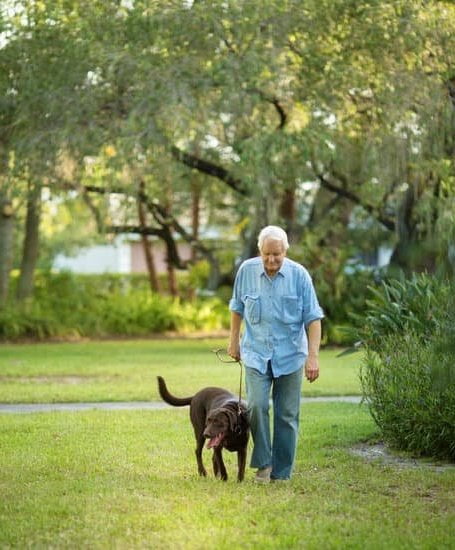There are many reasons why a dog might bark incessantly at the door, but most of them can be resolved through proper training. Dogs might bark for attention, because they’re anxious or because they’re trying to tell their owners something. Whatever the reason, there are several things you can do to train your dog to stop barking at the door.
The first step is to determine the cause of your dog’s barking. If your dog is barking for attention, you can start by ignoring him when he barks and only rewarding him when he’s quiet. If your dog is anxious, you can try to help him relax by providing a safe space for him to retreat to or by using calming therapies such as aromatherapy or massage. If your dog is trying to tell you something, such as someone is at the door, you can start by teaching him to “speak” or “quiet” on cue.
Once you’ve determined the cause of your dog’s barking, you can start working on a training program to address it. If your dog is barking for attention, you’ll want to start by teaching him to sit or stay until you release him. If your dog is anxious, you’ll want to work on teaching him to relax in a variety of situations. If your dog is trying to tell you something, you’ll want to start by teaching him to bark on cue, and then teaching him to stop barking on cue.
It’s important to be patient and consistent when training your dog to stop barking at the door. It may take a little time, but with patience and perseverance, you can train your dog to stop barking and enjoy the peace and quiet he deserves.
How To Train Your Dog To Stop Pulling When Walking
When you are out walking your dog, it is important that they walk by your side and not pull on the leash. This can be a difficult behavior for some dogs to break and can be frustrating for owners. However, with some patience and training, you can have your dog walking by your side in no time.
The first step in training your dog to stop pulling is to get them to pay attention to you. When you are out walking, keep your body posture upright and your eyes locked onto your dog. When your dog looks at you, give them a treat or pet them to show them that they did the right thing.
Once your dog is paying attention to you, start to walk them in a specific direction. When they pull on the leash, stop walking and wait for them to calm down. Once they are sitting by your side, give them a treat and resume walking.
If your dog starts to pull again, repeat the same process. It may take a while for your dog to get the hang of it, but with patience and consistency, they will eventually learn how to walk by your side.
Train A Dog To Stop Barking At Strangers
There are a few different things you can do to train your dog to stop barking at strangers. The first step is to make sure that your dog is getting enough exercise. If your dog is getting enough exercise, he or she will be less likely to bark at strangers. The second step is to make sure that your dog is properly socialized. If your dog is properly socialized, he or she will be less likely to bark at strangers. The third step is to train your dog to obey basic commands. If your dog is obedient, he or she will be less likely to bark at strangers. The fourth step is to reward your dog for good behavior. If you reward your dog for good behavior, he or she will be less likely to bark at strangers. The fifth step is to correct your dog when he or she barks at strangers. If you correct your dog when he or she barks at strangers, he or she will be less likely to bark at strangers.
How To Train My Dog To Stop Whining
Dogs whine for a variety of reasons: they may be seeking attention, they may be feeling anxious or uncomfortable, or they may be trying to communicate something to their owner. If your dog is whining, it’s important to determine the cause of the behavior and address it accordingly.
There are a variety of methods you can use to train your dog to stop whining. One approach is to ignore the behavior. If your dog is whining for attention, withholding attention may stop the behavior. Another approach is to provide positive reinforcement when your dog is quiet. You can give your dog a treat or pet them when they stop whining. Finally, you can also use aversive conditioning to stop the behavior. This involves using a loud noise or a spray of water to discourage the whining.
It’s important to be patient when training your dog to stop whining. It may take some time for the behavior to change. However, with patience and consistent reinforcement, you can train your dog to stop whining.
How To Train A Dog To Stop Pulling While Walking
When it comes to dog training, there are a few things that are key: consistency, patience, and positive reinforcement. And, of course, when it comes to walking your dog, perhaps one of the most important things to remember is that you don’t want them pulling on the leash.
Luckily, there are a number of ways to train your dog to stop pulling while walking. One of the simplest is to use a training collar and leash. When your dog pulls, give a short tug on the leash and immediately release it. When your dog relaxes and stops pulling, praise them and give them a treat.
Another way to train your dog to stop pulling is to use a cue. When your dog starts to pull, say “no” in a firm voice. When they stop pulling, say “good dog” and give them a treat.
It’s also important to remember to keep your walks positive. Make sure to take your dog out for plenty of walks and rewards them with treats and praise when they walk nicely on the leash.

Welcome to the blog! I am a professional dog trainer and have been working with dogs for many years. In this blog, I will be discussing various topics related to dog training, including tips, tricks, and advice. I hope you find this information helpful and informative. Thanks for reading!





